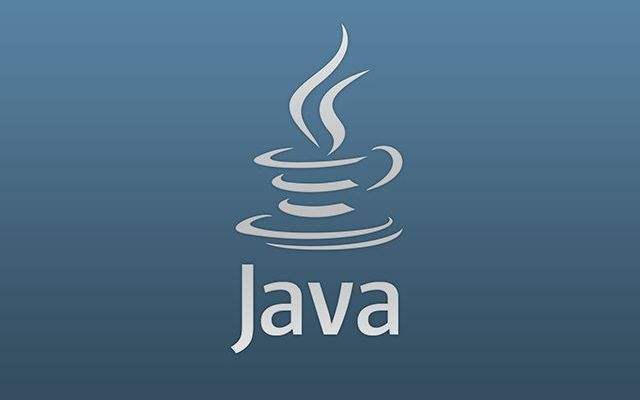Java基础 IO & NIO file操作总结(详细)

前言
IO操作比较繁琐,容易忘记,再加上NIO的一些基本操作,一段时间内居然混淆,这里做一下记录,以后直接拿来用,忘了方便查阅。还有,这里直接贴代码,运行结果就不放上去了。:open_mouth:
1. 原生IO对File读写复制
1.1 读取控制台中的输入
public void test1() throws IOException {
BufferedReader bufferedReader = new BufferedReader(new InputStreamReader(System.in));
System.out.println("请输入一个字符");
char c;
c = (char) bufferedReader.read();
System.out.println("你输入的字符为"+c);
}
复制代码
public void test2() throws IOException {
BufferedReader bufferedReader = new BufferedReader(new InputStreamReader(System.in));
System.out.println("请输入一行字符");
String str = bufferedReader.readLine();
System.out.println("你输入的字符为" + str);
}
复制代码
1.2 二进制文件的写入和读取 FileOutputStream+FileInputStream
public void test04() throws IOException {
byte[] bytes = {12,21,34,11,21};
FileOutputStream fileOutputStream = new FileOutputStream(new File(""));
fileOutputStream.write(bytes);
fileOutputStream.close();
}复制代码
public void test05() throws IOException {
FileInputStream fileInputStream = new FileInputStream(new File(""));
int c;
// 读取写入的二进制文件,输出字节数组
while ((c = fileInputStream.read()) != -1) {
System.out.print(c);
}
}复制代码
1.3 文本文件的写入和读取 FileReader + FileWriter
public void test1() throws IOException {
FileReader fileReader = new FileReader(new File(""));
BufferedReader bufferedReader = new BufferedReader(fileReader);
String str;
while ((str = bufferedReader.readLine()) != null) {
System.out.println(str);
}
fileReader.close();
bufferedReader.close();
}
public void test2() throws IOException {
FileReader fileReader = new FileReader(new File(""));
int c;
// 读取字符
while ((c = fileReader.read()) != -1) {
System.out.print((char) c);
}
}复制代码
// 开启追加模式
public static void test1() throws IOException { FileWriter fileWriter = new FileWriter(new File("D://1.txt"), true); // 开启追加模式
fileWriter.write("----1----");
fileWriter.write("----2----"); // 不会覆盖文件原本的内容
// fileWriter.write(null); 不能直接写入 null
fileWriter.append("----3----"); // 直接追加的内容
fileWriter.append(null);
fileWriter.flush();
fileWriter.close();
}
// 关闭追加模式
public void test2() throws IOException {
FileWriter fileWriter = new FileWriter(new File("").getAbsolutePath()+"/io/test.txt", false); // 关闭追加模式,变为覆盖模式
fileWriter.write("----1----");
fileWriter.write("----2----"); // 覆盖掉前面的内容
fileWriter.append("----3----"); // 追加的内容
fileWriter.flush();
fileWriter.close();
}
复制代码
1.4 文本文件的写入和读取 OutputStreamWriter+ InputStreamReader
public void test1() throws IOException {
FileOutputStream fileOutputStream = new FileOutputStream(new File(""));
OutputStreamWriter outputStreamWriter = new OutputStreamWriter(fileOutputStream, "utf-8"); // 使用 GBK 编码文件
outputStreamWriter.write("----1----");
outputStreamWriter.append("----2----"); // 追加内容
outputStreamWriter.flush();
outputStreamWriter.close();
fileOutputStream.close();
}
public void test2() throws IOException {
FileInputStream fileInputStream = new FileInputStream(new File("").getAbsolutePath()+"/io/test2.txt");
InputStreamReader inputStreamReader = new InputStreamReader(fileInputStream, "GBK"); // 使用 GBK 解码文件
BufferedReader bufferedReader = new BufferedReader(inputStreamReader);
String str;
while ((str = bufferedReader.readLine()) != null) {
System.out.println(str);
}
bufferedReader.close();
inputStreamReader.close();
}复制代码
1.5 复制文件
输入和输出使用缓冲流 BufferedInputStream + BufferedInputStream
public void test1() throws IOException {
FileInputStream in = new FileInputStream("");
BufferedInputStream inBuffer = new BufferedInputStream(in);
FileOutputStream out = new FileOutputStream("");
BufferedOutputStream outBuffer = new BufferedOutputStream(out);
int len = 0;
byte[] bs = new byte[1024];
while ((len = inBuffer.read(bs)) != -1) {
outBuffer.write(bs, 0, len);
}
in.close();
outBuffer.close();
out.close();
}
复制代码
输入和输出都不使用缓冲流 FileInputStream + FileOutputStream
public void test2() throws IOException {
FileInputStream in = new FileInputStream("");
FileOutputStream out = new FileOutputStream("");
int len = 0;
byte[] bs = new byte[1024];
while ((len = in.read(bs)) != -1) {
out.write(bs, 0, len);
}
in.close();
out.close();
}
复制代码
按字符拷贝 FileReader + FileWriter
public void test3() throws IOException {
File file=new File("");
if(!file.isFile()){
System.out.println("文件不存在,无法拷贝!");
return;
}
FileReader fr=new FileReader(file);
FileWriter fw=new FileWriter("");
char chars[]=new char[512];
int temp=0;
while ((temp=fr.read(chars))!=-1){
fw.write(chars,0,temp);
}
fw.flush();
fw.close();
fr.close();
System.out.println("拷贝成功!");
}
}
复制代码
2. NIO对File读写复制

2.1 写操作
public void test1() throws IOException {
FileOutputStream fileOutputStream = new FileOutputStream("");
FileChannel fileChannel = fileOutputStream.getChannel();
// 创建一个缓冲区
ByteBuffer byteBuffer = ByteBuffer.allocate(1024);
byteBuffer.put("[内容]".getBytes());
// 对byteBuffer进行flip
byteBuffer.flip();
// 将byteBuffer数据写入fileChannel
fileChannel.write(byteBuffer);
fileOutputStream.close();
}复制代码
2.2 读操作
public void test1() throws IOException {
File file = new File("");
FileInputStream fileInputStream = new FileInputStream(file);
// 获得inputStream对应的FileChannel
FileChannel fileChannel = fileInputStream.getChannel();
// 创建缓冲区
ByteBuffer byteBuffer = ByteBuffer.allocate((int)file.length());
// 从channel读数据到byteBuffer
fileChannel.read(byteBuffer);
// 将byteBuffer的字节数据转换成String
System.out.println(new String(byteBuffer.array()));
fileInputStream.close();
}复制代码
2.3 复制操作
FileChannel 实现
public void test1() throws IOException {
// 输入流
FileInputStream fileInputStream = new FileInputStream("");
FileChannel fileChannel1 = fileInputStream.getChannel();
// 输出流
FileOutputStream fileOutputStream = new FileOutputStream("");
FileChannel fileChannel2 = fileOutputStream.getChannel();
ByteBuffer byteBuffer = ByteBuffer.allocate(1024);
while (true) {
byteBuffer.clear();
int read = fileChannel1.read(byteBuffer);
if (read == -1) {
break;
}
// flip一次byteBuffer
byteBuffer.flip();
fileChannel2.write(byteBuffer);
}
fileInputStream.close();
fileOutputStream.close();
}复制代码
transferFrom实现
public void test1() throws IOException {
// 输入流
FileInputStream fileInputStream = new FileInputStream("");
FileChannel fileChannel1 = fileInputStream.getChannel();
// 输出流
FileOutputStream fileOutputStream = new FileOutputStream("");
FileChannel fileChannel2 = fileOutputStream.getChannel();
// 用transerFrom完成拷贝
fileChannel2.transferFrom(fileChannel1, 0, fileChannel1.size());
fileInputStream.close();
fileOutputStream.close();
}复制代码
正文到此结束
热门推荐
相关文章
Loading...











![[HBLOG]公众号](https://www.liuhaihua.cn/img/qrcode_gzh.jpg)

